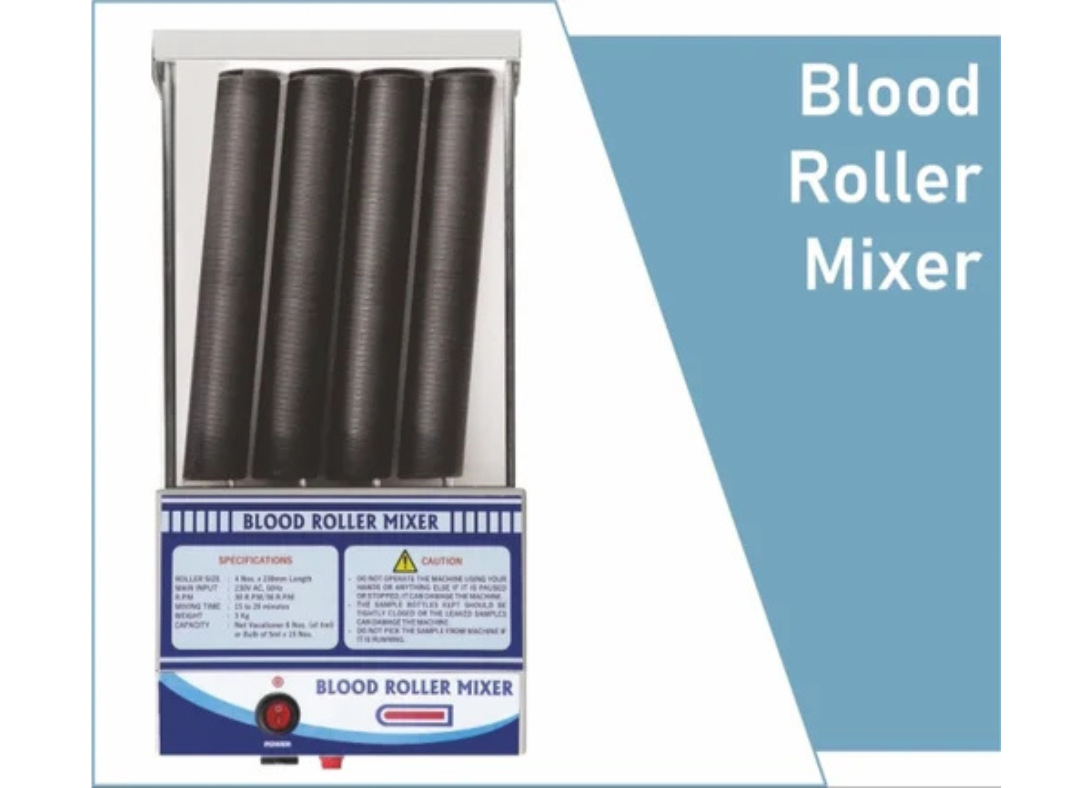4-A Gobind Nagar, Ambala Cantt - 133001, Haryana, India
+91 9996230084
Cleaning and Maintaining Your Blood Roller Mixer: A Step-by-Step Guide

Blood roller mixers are essential laboratory instruments used in clinical, research, and diagnostic labs to mix blood samples efficiently. Proper cleaning and maintenance of your blood roller mixer are crucial to ensure accurate test results, prevent contamination, and prolong the life of the device. In this guide, we will walk you through the step-by-step process to clean, maintain, and care for your blood roller mixer effectively.
Why Cleaning and Maintenance Matter
Blood roller mixers are in direct contact with biological samples. Neglecting proper cleaning can lead to:
-
Cross-contamination between samples
-
Inaccurate laboratory results
-
Shortened equipment lifespan
-
Increased risk of infection or biohazard exposure
Routine maintenance ensures smooth operation, reliability, and compliance with lab safety standards.
Safety Precautions Before Cleaning
Before starting the cleaning process, follow these safety measures:
-
Turn off and unplug the mixer to avoid electrical hazards.
-
Wear personal protective equipment (PPE) such as gloves, lab coat, and goggles.
-
Dispose of any remaining blood samples safely according to biohazard protocols.
-
Avoid using harsh chemicals that may damage the mixer’s surfaces or rollers.
Step-by-Step Guide to Cleaning Your Blood Roller Mixer
Step 1: Remove Blood Tubes and Accessories
Start by removing all blood tubes, racks, or any detachable accessories from the mixer. Clean these separately according to lab protocols.
Step 2: Wipe the Mixer Surface
Use a soft cloth dampened with a mild detergent or disinfectant to wipe down the exterior surfaces of the mixer. Avoid spraying liquids directly onto the device.
-
Focus on areas that may have come in contact with spilled samples.
-
Ensure that no moisture enters the electrical components.
Step 3: Clean the Rollers
The rollers are the most critical part of the mixer. Follow these tips:
-
Use a soft brush or cloth to remove blood residue from the rollers.
-
For stubborn stains, use a mild detergent or 70% ethanol solution.
-
Rotate the rollers manually while cleaning to reach all areas.
Step 4: Disinfect the Mixer
After cleaning, use a laboratory-approved disinfectant to sanitize the mixer surfaces. This step is crucial for preventing cross-contamination and maintaining biohazard safety.
-
Apply disinfectant with a cloth, not directly on the equipment.
-
Allow the surface to air-dry completely before using the mixer again.
Step 5: Clean Detachable Racks or Holders
If your mixer has detachable racks or tube holders, wash them thoroughly with warm soapy water, rinse, and disinfect. Ensure they are completely dry before reattaching.
Step 6: Inspect for Wear and Tear
Regularly check the mixer for:
-
Loose or worn rollers
-
Damaged electrical cords
-
Signs of rust or corrosion
Addressing these issues early can prevent equipment failure and costly repairs.
Routine Maintenance Tips
Proper maintenance enhances the longevity and performance of your blood roller mixer. Here are some tips:
-
Schedule regular cleaning: Daily for high-use labs, weekly for low-use labs.
-
Lubricate moving parts: Follow manufacturer guidelines for lubrication if needed.
-
Check roller alignment: Misaligned rollers can affect mixing efficiency.
-
Test functionality: Run a short test without samples to ensure smooth operation.
-
Store properly: Keep the mixer in a clean, dry area away from direct sunlight or chemicals.
Common Mistakes to Avoid
-
Using abrasive tools or harsh chemicals that can damage rollers.
-
Ignoring spills or contamination, which can lead to cross-contamination.
-
Skipping routine maintenance checks, which can shorten the equipment lifespan.
-
Allowing moisture to enter the electrical components.
Benefits of Proper Cleaning and Maintenance
Keeping your blood roller mixer clean and well-maintained provides several advantages:
-
Ensures accurate and reliable test results
-
Extends the lifespan of the mixer
-
Reduces risk of contamination
-
Enhances lab safety and compliance
-
Maintains consistent performance for all experiments
Conclusion
A blood roller mixer is a critical tool in any clinical or research laboratory. Following a systematic cleaning and maintenance routine ensures that your mixer performs optimally, delivers reliable results, and remains safe for laboratory personnel. By dedicating a few minutes each day to proper care, you can maximize the efficiency and lifespan of your blood roller mixer.

